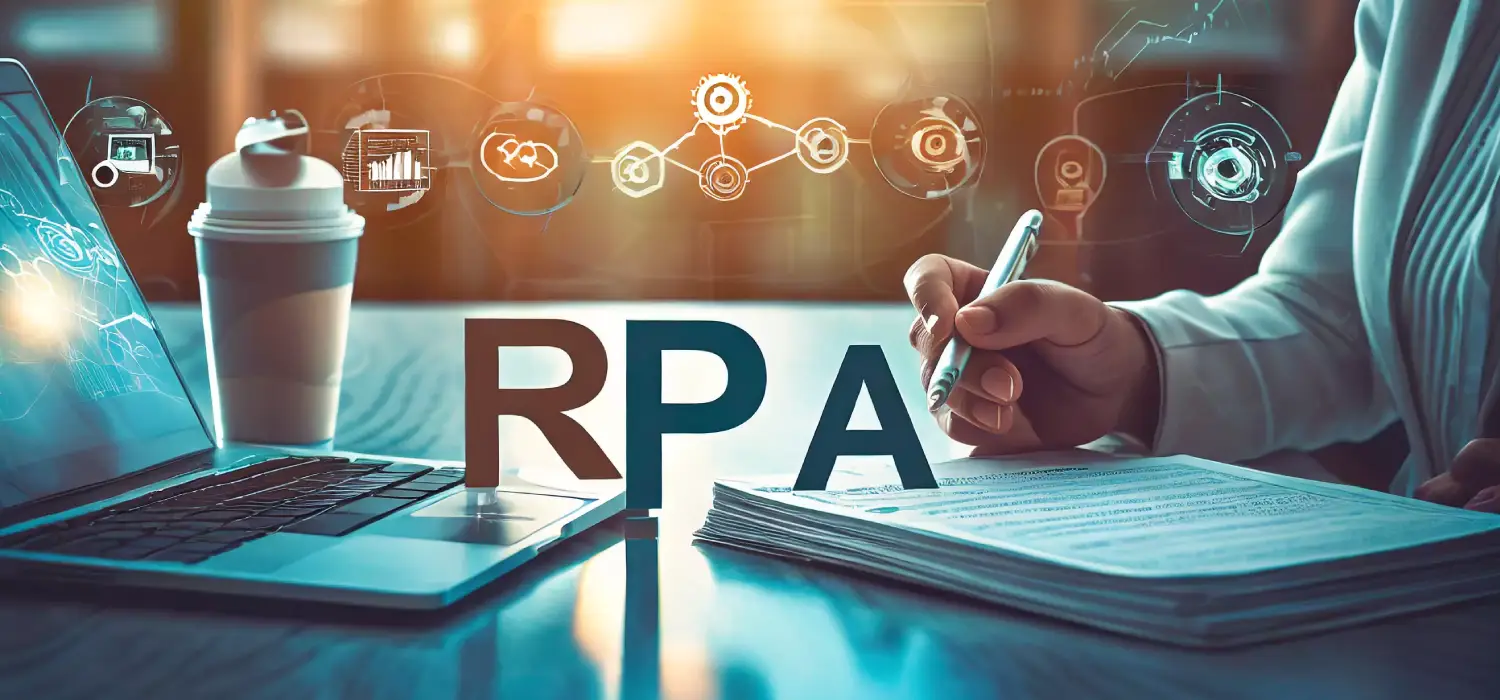The Role of RPA and AI in Business Automation: A Comparative Analysis
In recent years, the business has opted for automation technologies across various industries to accelerate growth. Also, RPA has become one of the key technologies to automate business processes. It plays a significant role in handling various automotive tasks. RPA works with rule-based software bots that perform repetitive and manual tasks that are tedious for human workers. Adapting RPA is important to make the smooth outcome of various business processes. Adopting Artificial Intelligence and RPA is important for every business process in every industry. Various sectors like IT, healthcare, finance, insurance, banking, and HR are adopting RPA to perform their tasks productively.
Organizations are extending RPA, combined with Artificial Intelligence (AI) to create smart and intelligent solutions. Artificial intelligence and RPA intelligence process automation have revolutionized and aim great benefits to companies for their digital transformation.
RPA vs AI
People are often confused between RPA with AI. While on the other hand, both technologies attempt to make life easier for business people. It’s become important to know the difference between the two. RPA is used to automate repetitive tasks by installing robots to perform tasks. These robots are virtual assistants that function to complete tasks, as they are programmed. On the other hand, AI performs like humans by reasoning and learning. It has more advanced capabilities and easily handles complex tasks by adapting the natural process. RPA with AI speech recognition provides data-driven and performs decision-making insights and outcomes.
Understanding RPA: The Workhorse of Automation
RPA, or Robotic Process Automation, is the digital workforce of today’s business world. These bots are highly efficient, error-free, and tirelessly execute tasks with remarkable consistency. RPA’s core attributes include:
1. Repetitive Task Automation
AI in business automation is tailor-made for automating routine, manual tasks that do not require decision-making or cognitive abilities. These tasks often involve data entry, data extraction, and rule-based data processing.
2. Workflow Automation
RPA can automate end-to-end workflows by orchestrating the execution of multiple tasks across different systems and applications. Intelligence process automation capability helps in automating complex processes that involve various steps and dependencies.
3. User Interface Interaction
RPA bots interact with the user interfaces of applications, just like humans. They can click buttons, enter data into forms, and extract information from screens, making them versatile in integrating with legacy systems and applications.
4. Rule-Based Logic
RPA relies on predefined rules and business logic to make decisions. It doesn’t possess true cognitive abilities or self-learning capabilities. Instead, it follows the instructions set by developers or administrators.
5. Rapid Implementation
One of the key advantages of AI in business automation is its rapid implementation. Bots can be trained and deployed relatively quickly, making them a go-to solution for automating repetitive tasks within a short timeframe
Demystifying AI: The Cognitive Enabler
AI, or Artificial Intelligence, represents a more sophisticated realm of automation. AI’s core attributes include:
- Cognitive Abilities: AI systems mimic human cognitive functions. It helps in making natural language understanding, speech recognition, image analysis, and problem-solving. These skills process unstructured data, understand context, and make informed decisions.
- Machine Learning: AI leverages machine learning algorithms to improve performance over time. This means AI systems can continuously refine their performance based on the data they receive and the outcomes they observe.
- Predictive Analytics: AI is proficient at predictive analytics, identifying trends, making forecasts, and recommending actions. Intelligence process automation helps to process large volumes of data that provide insights and support strategic decision-making
- Natural Language Processing (NLP): AI can understand and generate human language. NLP enables chatbots, virtual assistants, and sentiment analysis tools, enhancing customer service and communication.
- Automation with Decision-Making: AI can automate tasks that involve decision-making based on complex criteria. For example, it can be used to automate credit approvals, fraud detection, and personalized marketing.
A Comparative Analysis of RPA and AI
Now that we’ve explored the fundamental characteristics of RPA and AI, let’s conduct a comparative analysis of these two automation approaches:
1. Scope of Automation
- RPA: Primarily automates rule-based, repetitive tasks and processes that involve structured data. It is excellent for task automation.
- AI: Focuses on cognitive tasks, unstructured data analysis, and decision-making. It excels in areas where human-like thinking and understanding are required.
2. Learning and Adaptation
- RPA: Does not learn or adapt on its own. It relies on predefined rules and instructions.
- AI: Learns and adapts from data. Intelligence process automation can improve its performance over time through machine learning.
3. Use Cases
- RPA: Ideal for automating data entry, data extraction, order processing, and repetitive clerical tasks. Commonly used in back-office operations with intelligence process automation.
- AI: Applied in customer service chatbots, predictive maintenance, recommendation systems, and image recognition. It’s often used in customer-facing scenarios.
4. Implementation Time
- RPA: Rapid implementation, making it suitable for quickly automating tasks within a matter of weeks.
- AI: Longer implementation timelines due to the need for data training and model development.
5. Human Interaction
- RPA: Primarily interacts with applications’ user interfaces. It requires structured data input.
- AI: Interacts through natural language processing, making it suitable for chatbots and virtual assistants.
The Synergy of RPA and AI
While RPA with AI have their unique strengths and applications, they are not mutually exclusive. Let’s see how they can complement each other:
- Task Automation: RPA can handle repetitive, rule-based tasks, while AI can assist in decision-making and analysis, enhancing the overall process.
- Data Entry and Processing: RPA can extract data from structured documents, and AI can further analyze unstructured data for insights.
- Customer Service: RPA can manage routine inquiries, and AI-driven chatbots can handle more complex, context-aware interactions.
- Document Processing: RPA can sort and categorize documents, while AI can extract relevant information and make predictions.
- Optimizing Workflows: RPA can automate workflow steps, and AI can recommend process improvements based on data analysis.
- Predictive Maintenance: AI can forecast equipment failures, and RPA can trigger maintenance requests and generate work orders.
Key Takeaways
The landscape of business automation, RPA, and AI play pivotal roles, each with its own set of capabilities and applications. RPA excels at automating repetitive, rule-based tasks, while AI exhibits cognitive abilities, machine learning, and complex decision-making. A comparative analysis of artificial intelligence and RPA reveals that both technologies have distinct areas of strength and applications. After reading and getting all the details about RPA vs AI it’s easy to understand a detailed comparative analysis between both technologies.

 contact
contact

 By
By 


